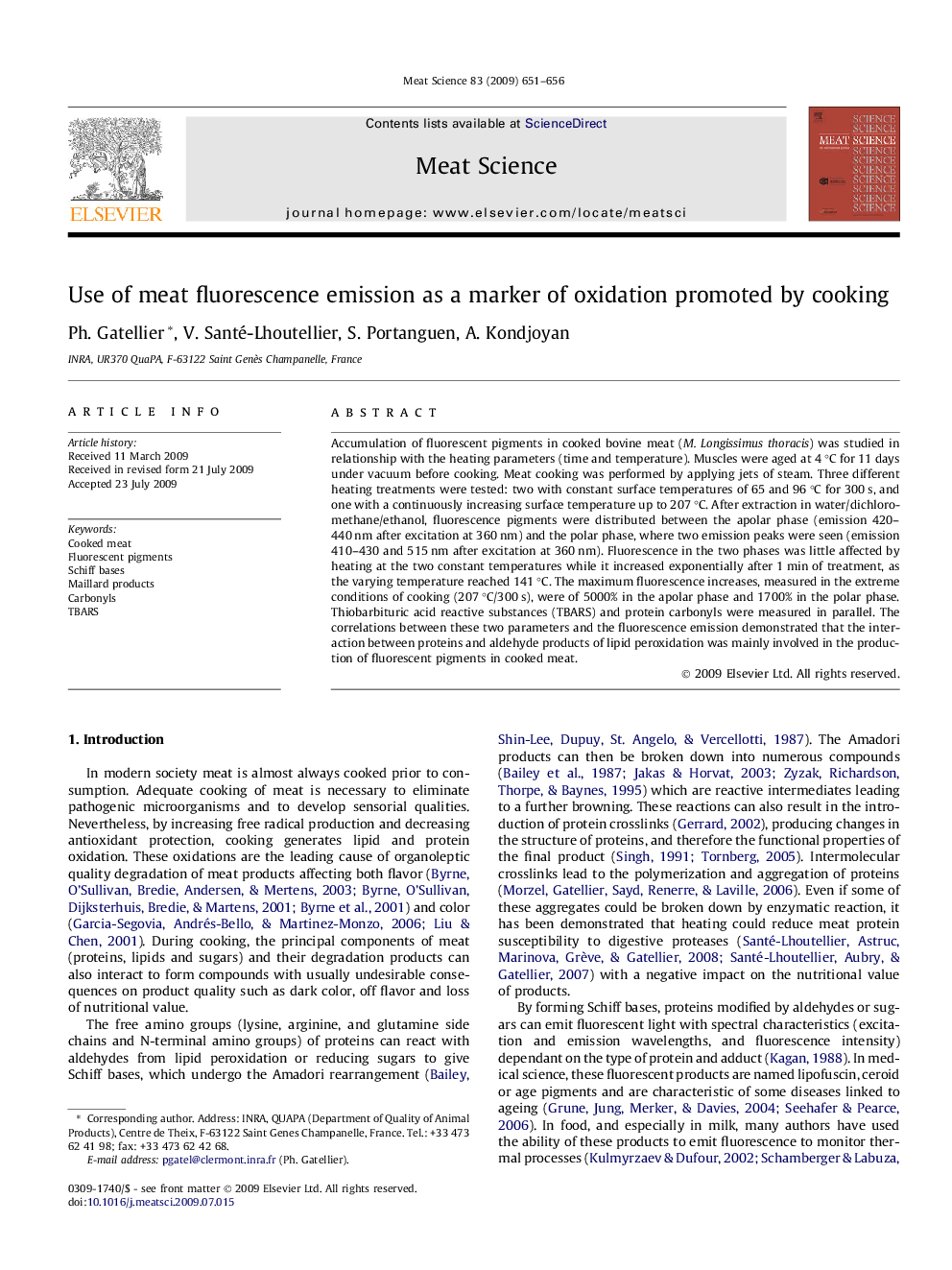| کد مقاله | کد نشریه | سال انتشار | مقاله انگلیسی | نسخه تمام متن |
|---|---|---|---|---|
| 2451200 | 1109675 | 2009 | 6 صفحه PDF | دانلود رایگان |

Accumulation of fluorescent pigments in cooked bovine meat (M. Longissimus thoracis) was studied in relationship with the heating parameters (time and temperature). Muscles were aged at 4 °C for 11 days under vacuum before cooking. Meat cooking was performed by applying jets of steam. Three different heating treatments were tested: two with constant surface temperatures of 65 and 96 °C for 300 s, and one with a continuously increasing surface temperature up to 207 °C. After extraction in water/dichloromethane/ethanol, fluorescence pigments were distributed between the apolar phase (emission 420–440 nm after excitation at 360 nm) and the polar phase, where two emission peaks were seen (emission 410–430 and 515 nm after excitation at 360 nm). Fluorescence in the two phases was little affected by heating at the two constant temperatures while it increased exponentially after 1 min of treatment, as the varying temperature reached 141 °C. The maximum fluorescence increases, measured in the extreme conditions of cooking (207 °C/300 s), were of 5000% in the apolar phase and 1700% in the polar phase. Thiobarbituric acid reactive substances (TBARS) and protein carbonyls were measured in parallel. The correlations between these two parameters and the fluorescence emission demonstrated that the interaction between proteins and aldehyde products of lipid peroxidation was mainly involved in the production of fluorescent pigments in cooked meat.
Journal: Meat Science - Volume 83, Issue 4, December 2009, Pages 651–656